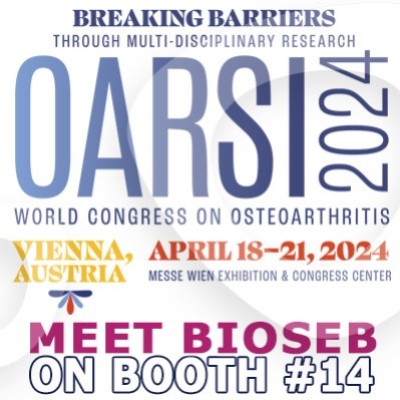To date, there is no validated tool available for the evaluation of weight bearing and gait in Guinea pig. To address this issue, Bioseb and Artialis have initiated a collaboration to validate Dynamic Weight Bearing platform in Guinea pig model of spontaneous osteoarthritis.
WEIGHT BEARING
Weight bearing in rodents, also named "incapacitance" test, is well known in nociceptive and analgesia research works, and used for studying osteoarthritis (OA) among others disorders.
Traditional static type instruments have been used in the last years in rodents. In particular, it is well documented for some species such as rat and mouse.
However, static incapacitance instruments are highly dependent on the animal’s position inside a stressful restrainer. This makes these systems time-consuming and difficult to use, particularly when large number of rodents are considered.
To address this issue, Bioseb developed the Dynamic Weight Bearing (DWB), a test to assess spontaneous pain in freely moving rodents. This device is based on an instrumented-floor cage and in combination with a video acquisition system.
In its latest version, the Advanced Dynamic Weight Bearing, is a semi-automatic, operator-independent instrument.
The Advanced DWB system offers the possibility of conducting experiments without an operator. It thus reduces the stress on the animal and the need for habituation period. The analysis of 1 animal will take 1 to 2 minutes.
With exclusive features, the Advanced DWB opens the way to improved generation of instruments for drugs screening and optimization of preclinical models.
Dynamic Weight Bearing set up. The animal is place in a Plexiglas chamber where he can move freely. The chamber is doted of a video acquisition system and the floor is made of sensors.
SPONTANEOUS MODEL OF OA IN GUINEA PIG
The spontaneous model of OA in Dunkin Hartley Guinea pig presents a strong translational value for its similarities with human disease.
Artialis developed a solid expertise using this model to evaluate potential OA treatment (drug, medical device, or dietary supplement). Several parameters of analysis were validated, from gold-standard end-points as histology to differentiating information as biomarkers or biomechanics of articular cartilage.
A complete solution including animal housing facilities and trained experimenters is available at Artialis’ facilities in Novalis Science Park in collaboration with CER group. These facilities offer a high quality level to customers, in an environment meeting the highest certification criteria.

Screenshot of one of the first acquisitions with guinea pigs from the DWB interface. The camera allows to monitor animal moves. Each move is recorded by the sensors and translated into pixels on the screen. These records are further processed to analyze animal gait and motion.
The study is held in the preclinical facilities of Artialis at the Novalis Science Park in collaboration with CER group.
A 3-month follow-up during the spontaneous development of OA will determine the relevance of using DWB in guinea pigs. It provides the opportunity for new adaptation and new development of the system to the Guinea Pig model. This is thus a true interaction between respective expertise of the parties that will allow the development of the application for the guinea pig and its validation. The results will be correlated to histological data to confirm the relevance of the measurements.
First acquisitions are well encouraging with excellent scoring abilities of the system. All data and study results will be published in an official scientific communication early 2017.

 Pain - Thermal Allodynia / Hyperalgesia
Pain - Thermal Allodynia / Hyperalgesia Pain - Spontaneous Pain - Postural Deficit
Pain - Spontaneous Pain - Postural Deficit Pain - Mechanical Allodynia / Hyperalgesia
Pain - Mechanical Allodynia / Hyperalgesia Learning/Memory - Attention - Addiction
Learning/Memory - Attention - Addiction Physiology & Respiratory Research
Physiology & Respiratory Research
 Pain
Pain Metabolism
Metabolism Motor control
Motor control Neurodegeneration
Neurodegeneration Cross-disciplinary subjects
Cross-disciplinary subjects Muscular system
Muscular system General activity
General activity Mood Disorders
Mood Disorders Other disorders
Other disorders Joints
Joints Central Nervous System (CNS)
Central Nervous System (CNS) Sensory system
Sensory system Bioseb on booth #14 at OARSI 2024 in Vienna
Bioseb on booth #14 at OARSI 2024 in Vienna